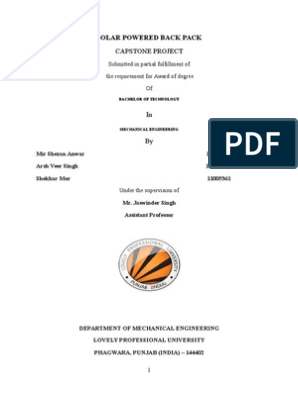1.
Migration Service Advantages:-
Migration services offer several advantages. Here are some of the key benefits:
1. Reduced Downtime: Migration services ensure minimal disruption to your business
operations, reducing downtime and ensuring that your applications and data are available to
users with minimal interruption.
2. Improved Performance: Migration to newer, more efficient systems can significantly
improve the performance of your applications, leading to faster response times and better user
experiences.
3. Enhanced Security: Migration services can help you move to more secure platforms,
reducing the risk of data breaches and cyber attacks.
4. Cost Savings: Migrating to cloud-based or virtualized environments can help reduce
infrastructure costs, lower maintenance expenses, and optimize resource utilization.
5. Scalability and Flexibility: Migration services enable you to scale your infrastructure up
or down as needed, providing greater flexibility to respond to changing business needs.
6. Access to New Features and Functionality: Migration to newer systems can provide
access to new features, functionality, and tools, enabling you to stay competitive and
innovative.
7. Simplified Management: Migration services can help simplify the management of your
IT infrastructure, reducing complexity and administrative burdens.
8. Data Integrity and Consistency: Migration services ensure that your data is migrated
accurately and consistently, reducing the risk of data loss or corruption.
2. Migration Service Working
Migration services typically follow a structured approach to ensure a smooth transition from
one system to another. Here's an overview of the migration service working process:
1. Assessment and Planning: Identify the systems, applications, and data to be migrated.
Determine the target platform, architecture, and infrastructure requirements. Develop a
detailed migration plan, including timelines, milestones, and resource allocation.
2. Data Collection and Analysis: Gather data on the existing system, including
configuration, usage patterns, and performance metrics. Analyze the data to identify potential
issues, dependencies, and areas for improvement.
� 3. Migration Design and Development: Create a detailed design for the migration,
including data mapping, interface development, and testing strategies. Develop custom
scripts, tools, or software to support the migration process.
4. Testing and Quality Assurance: Perform thorough testing of the migration process,
including data validation, system integration, and performance testing. Identify and resolve
any issues or defects that arise during testing.
5. Migration Execution: Execute the migration plan, including data transfer, system
configuration, and deployment. Monitor the migration process in real-time, addressing any
issues that arise.
6. Post-Migration Support and Maintenance: Provide ongoing support and maintenance to
ensure the new system operates smoothly and efficiently. Address any post-migration issues,
perform system updates, and optimize system performance.
Migration Service Methodologies: Migration services may employ various methodologies,
including:
Lift and Shift: A straightforward migration approach that involves moving applications and
data from one system to another with minimal changes.
Re-Architecting: A more complex approach that involves re-designing the application
architecture to take advantage of the target platform's features and capabilities.
Hybrid: A combination of lift and shift and re-architecting approaches, where some
components are migrated as-is, while others are re-designed or re-architected.
3. Migration services tools
Migration services employ a variety of tools to facilitate the migration process. Here are
some common tools used in migration services:
� 1. Data Migration Tools: AWS Database Migration Service (DMS): A cloud-based service
that enables the migration of databases to AWS. Microsoft Azure Database Migration
Service: A cloud-based service that enables the migration of databases to Azure. Talend: An
open-source data integration platform that provides data migration capabilities. Informatica
PowerCenter: A comprehensive data integration platform that supports data migration.
2. Cloud Migration Tools: AWS CloudEndure Migration: A cloud-based service that
enables the migration of applications and data to AWS. Google Cloud VMware Engine: A
cloud-based service that enables the migration of VMware workloads to Google Cloud.
Azure Migrate: A cloud-based service that enables the migration of applications and data to
Azure. Riverbed Cloud Migration: A cloud-based service that enables the migration of
applications and data to cloud environments.
3. Application Migration Tools: AppDynamics: A comprehensive application
performance monitoring platform that supports application migration. New Relic: A
comprehensive application performance monitoring platform that supports application
migration. Rapid7: A comprehensive vulnerability management platform that supports
application migration. CAST Highlight: A cloud-based platform that provides application
portfolio analysis and migration planning capabilities.
4. Virtualization and Containerization Tools: VMware vSphere: A virtualization platform
that enables the migration of virtual machines to cloud environments. Docker: A
containerization platform that enables the migration of containerized applications to cloud
environments. Kubernetes: A container orchestration platform that enables the migration of
containerized applications to cloud environments.
5. Project Management and Collaboration Tools: Asana: A project management platform
that enables teams to collaborate and track migration projects. Trello: A project
management platform that enables teams to collaborate and track migration projects.
Microsoft Teams: A collaboration platform that enables teams to collaborate and track
migration projects. Jira: A project management platform that enables teams to collaborate
and track migration projects.
These are just a few examples of the many tools available for migration services. The choice
of tool often depends on the specific requirements of the migration project, the type of data or
application being migrated, and the target platform or environment.






















































































